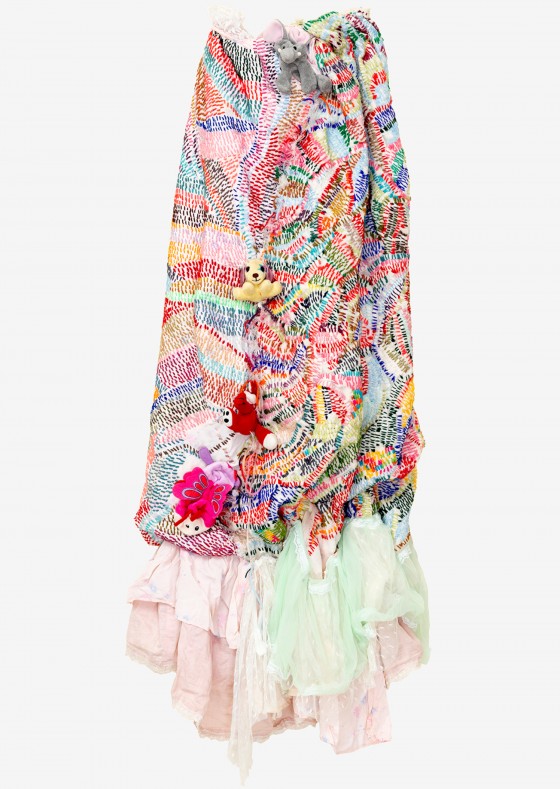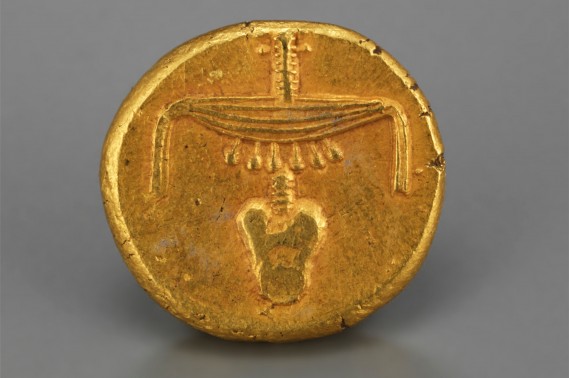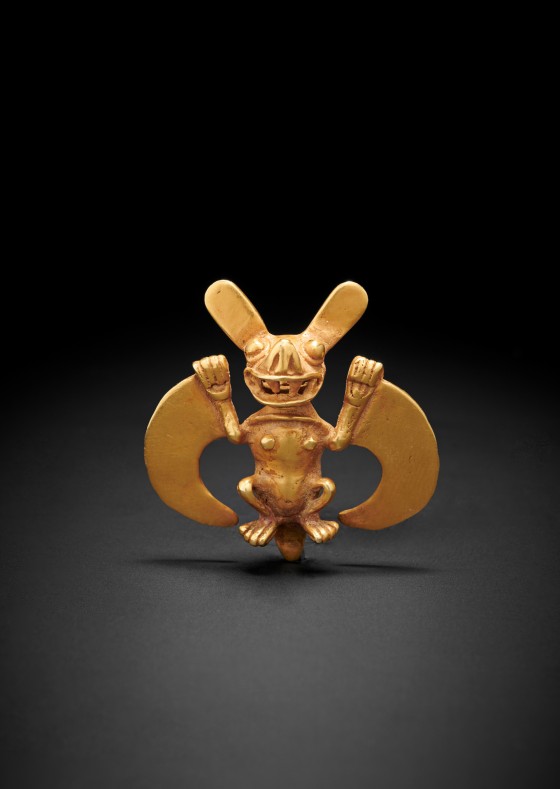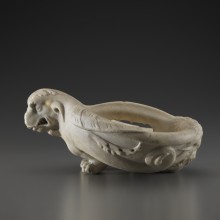
April 2018 Archaeology
Stater of Nectanebo II
Initial skepticism
Scholars suggest that the Lydians, whose kingdom was located in the Western litoral of the Anatolian peninsula of what is now the modern nation state of the Republic of Turkey, minted the first coins during the course of the 7th century BC. Thereafter most states in the Mediterranean basin began to mint their own coins so that a monetized economy shortly dominated most national and international financial transactions. Many of those early coins were minted in both gold and silver, but the ancient Egyptians were reluctant to adopt this new practice. They steadfastly adhered to their millennium-old custom of barter—exchanging commodities of equivalent value for other commodities. Their reluctance to adopt coinage has been attributed to their suggested religious aversion for the use of gold, considered to be the flesh of their divinities, and silver, considered to be the bones of their deities, for mundane, mercantile purposes. When the very first coin of the type to which FGA-ARCH-EG-0363 belongs was identified in 1901, scholars, aware of the reluctance of the ancient Egyptian to mint coins, were initially reluctant to accept its authenticity and considered it to be a forgery.
See the artwork in the collection
Stater of Nectanebo II
FGA-ARCH-EG-0363
Dynasty XXX, reign of Nectanebo II, 360-342 BC
Gold
1.7 x 1.7 x 0.3 cm
Geographical origin
Egypt
Provenance
Collection Félix-Bienaimé Feuardent (1819-1907)
Fraysse & Associés, Paris, 26 novembre 2009, lot nº 16
See also

September 2023 African Contemporary Art and of the Diaspora
Georgina Maxim (Harare, Zimbabwe, 1980)
Dear Fesmeri and Mareni, the dress doesn’t fit III
2022

December 2021 Decorative Arts
Pierre Soulages
Vase (known as the “Sèvres Vase” or “Soulages Vase”)
2000-2008







